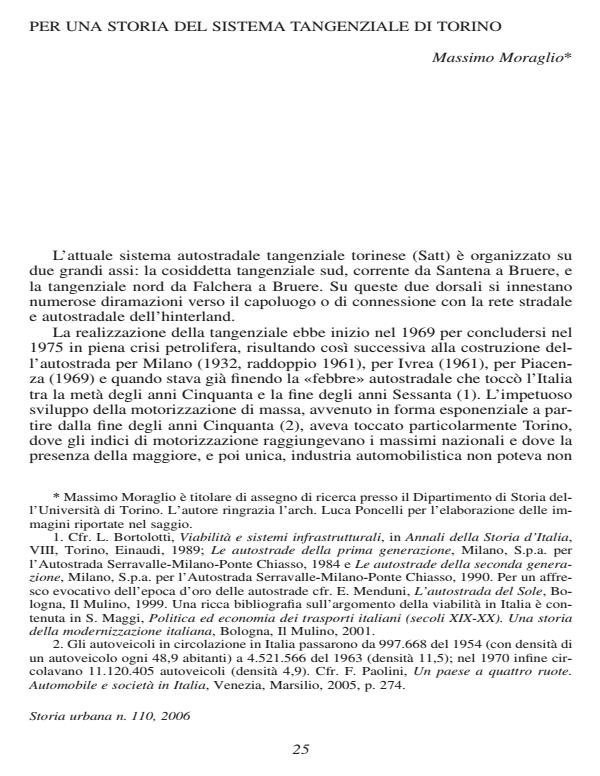Per una storia del sistema tangenziale di Torino
Titolo Rivista STORIA URBANA
Autori/Curatori Massimo Moraglio
Anno di pubblicazione 2006 Fascicolo 2006/110
Lingua Italiano Numero pagine 21 P. Dimensione file 1120 KB
DOI
Il DOI è il codice a barre della proprietà intellettuale: per saperne di più
clicca qui
Qui sotto puoi vedere in anteprima la prima pagina di questo articolo.
Se questo articolo ti interessa, lo puoi acquistare (e scaricare in formato pdf) seguendo le facili indicazioni per acquistare il download credit. Acquista Download Credits per scaricare questo Articolo in formato PDF

FrancoAngeli è membro della Publishers International Linking Association, Inc (PILA)associazione indipendente e non profit per facilitare (attraverso i servizi tecnologici implementati da CrossRef.org) l’accesso degli studiosi ai contenuti digitali nelle pubblicazioni professionali e scientifiche
Since the twenties many hypotheses for the construction of a by-pass network for the city of Turin had been suggested, a system designed to make car traffic faster and smooth-flowing. Abandoning the idea of an urban motorway across the historic city centre, the sixties with their economic boom and mass motorization saw the need for a ring-road around Turin increasing. However, it was only towards the end of the 1960s that the local government began its construction, which was completed in 1973 just during the oil crisis. The route of the ring-road followed the plans advanced before and after WW2, but against expectations the system turned out to facilitate local circulation rather than long distance traffic.
Massimo Moraglio, Per una storia del sistema tangenziale di Torino in "STORIA URBANA " 110/2006, pp , DOI: